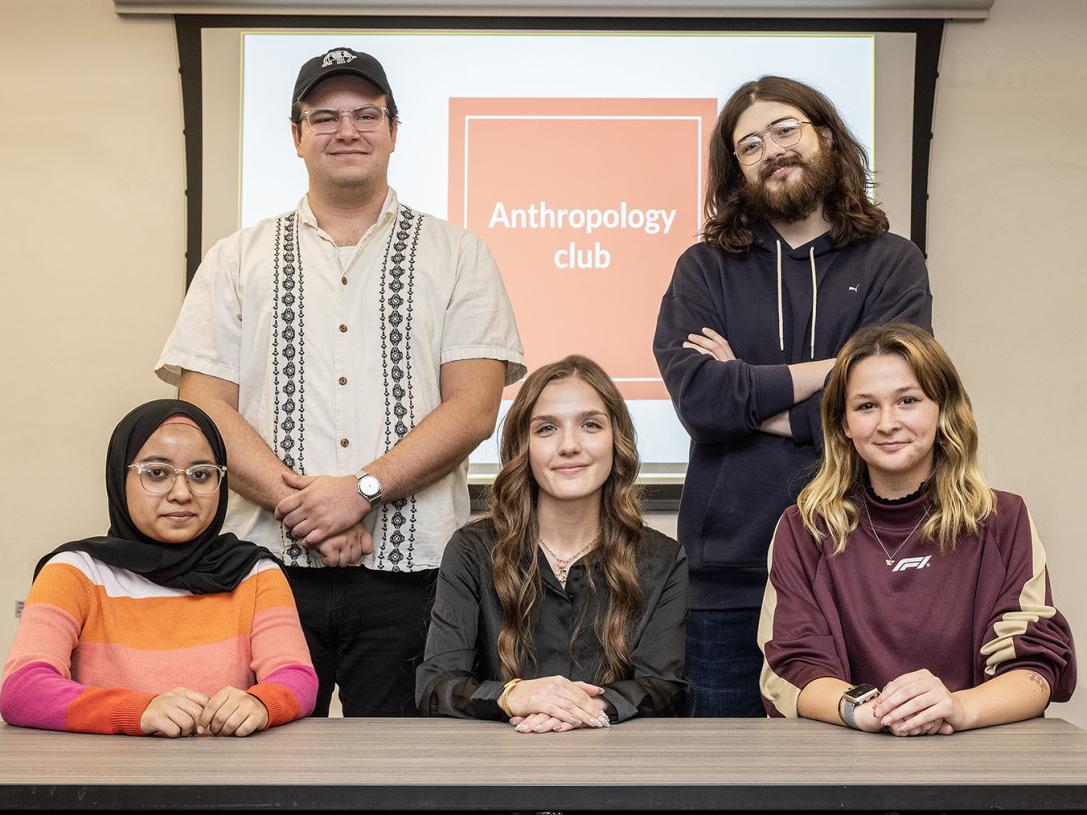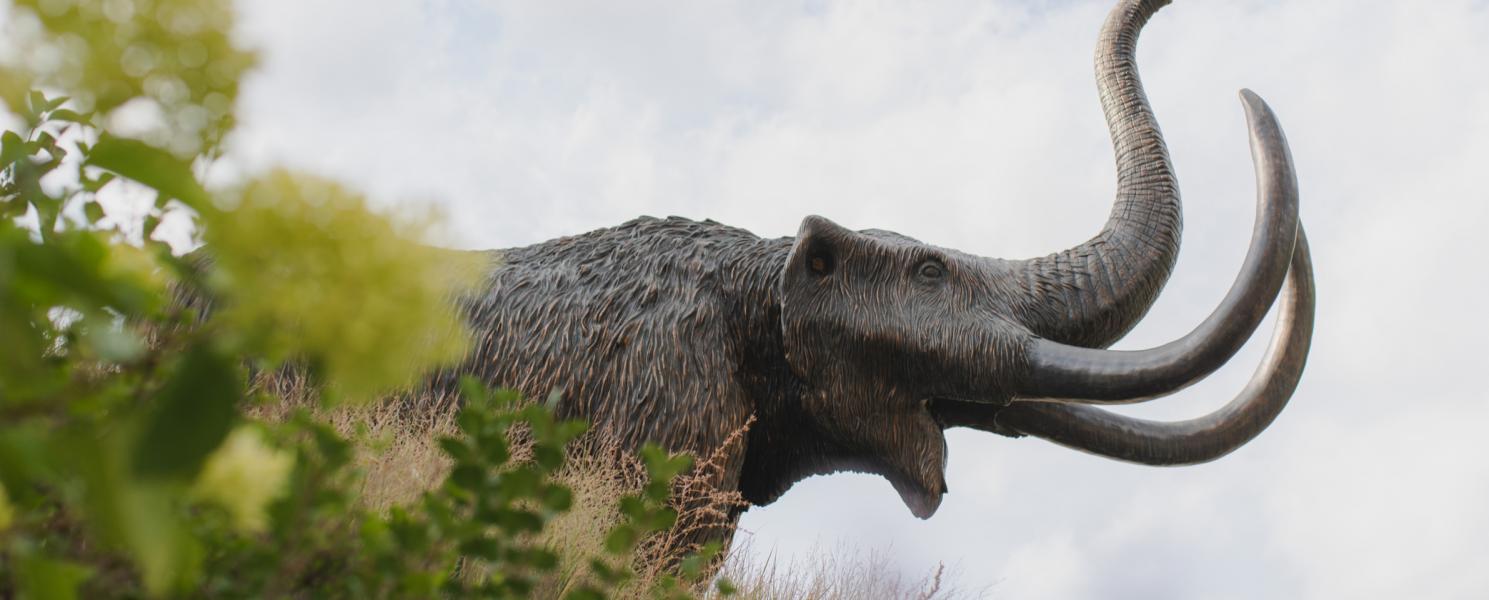



Library systems specialist Graham Fredrick was a member of the team that performed a 3D scan of a baby mastodon skull.

Library staffers Erika Mann and Daniel Lin were members of the team that performed a 3D scan of a baby mastodon skull.


Digital library team pushes ahead while looking back
By Blake Sebring
April 29, 2025
As the permanent mastodon bones display was being built in a Walb Student Union hallway in August, the Helmke Library team of Erika Mann, Graham Fredrick, and Daniel Lin was working about 15 feet to the side. They were 3D scanning the skull of the baby mastodon, Edgar, which was discovered near the larger skeleton, Donna, 57 years ago on a Steuben County farm.
The scans are now available for future study, but also hopefully to fulfill a promise. Edgar had been displayed at Fort Wayne’s Science Central before returning to the university, and the goal is to return a 3D scan to Science Central.
It’s an example of how the digital initiatives and technology group, responsible for maintaining and adding to the library's digital collections, is always thinking ahead—while also looking back as historians. Each day, new items are added to the university's online archives due to the dedicated consistency of the four-person department, with help from four student workers.
Mann is the director of library technology and digital initiatives, Lin serves as the library’s information services technician, Fredrick is the group’s library systems specialist, and Mike Van Huisen is the digital initiatives assistant. However, none of their titles accurately convey the scope of what they do. In addition to maintaining the library’s systems, access to digital resources, and technology, the team provides support for digital projects and manages the university’s digital archives.
Almost daily, there are requests from professors and campus organizations for information about campus history or to preserve more materials. As an example, the PFW Encyclopedia has 2,611 pages of details, and it grows every year.
The Mastodon Digital Object Network, or MDon for short, holds 22 collections. Included are the University Archives Gallery, holding 1,366 pictures and counting throughout the school’s 61-year history.
The OnStage on Campus collection displays memorabilia such as playbills, photos, and articles from 454 campus productions. Other favorites are Fort Wayne area history collections, the Fort Wayne Free Press, and PFW Student Works, which holds contributions to the annual Student Research and Creative Endeavors Symposium.
Van Huisen is currently working on uploading all editions of the former student newspaper, The Communicator, a project so big he knows he’ll not be the one to finish it. On a good day, he can upload 40 pieces, but it’s mostly less because the work is so finite.
The Communicator started in 1969 and continued until 2012. That collection already includes earlier student newspapers such as the Purdue Riveter, IU Student, and The Fort Wayne Student—some dating to the 1940s.
“It’s one of the more significant things for information and history and everything about the institution,” said Van Huisen, who understands he’s working on behalf of someone 50 years from now who wants to research the campus, especially from the student perspective.
"This has been the most intriguing job I've ever had. I get to be immersed in the history of this campus and feel that I've gotten to know `up close and personal’ people, events, attitudes, and culture that have made this institution what it is. I'm excited about everyone getting to see this.”
The group also interacts with faculty and students to teach them how to use the archives for projects, or to invite them to the Digital Arts & Humanities Lab.
“I get to work with the best people because they like the challenge of trying something new and testing how to make a process work,” Mann said.
As for the next challenge, Fredrick said they’d like to try digitizing Donna.



